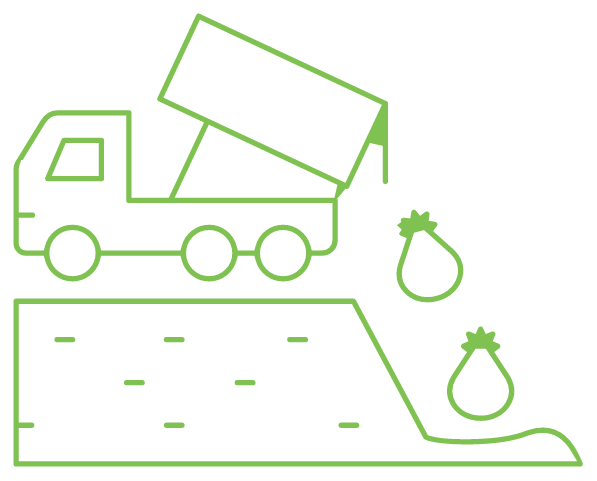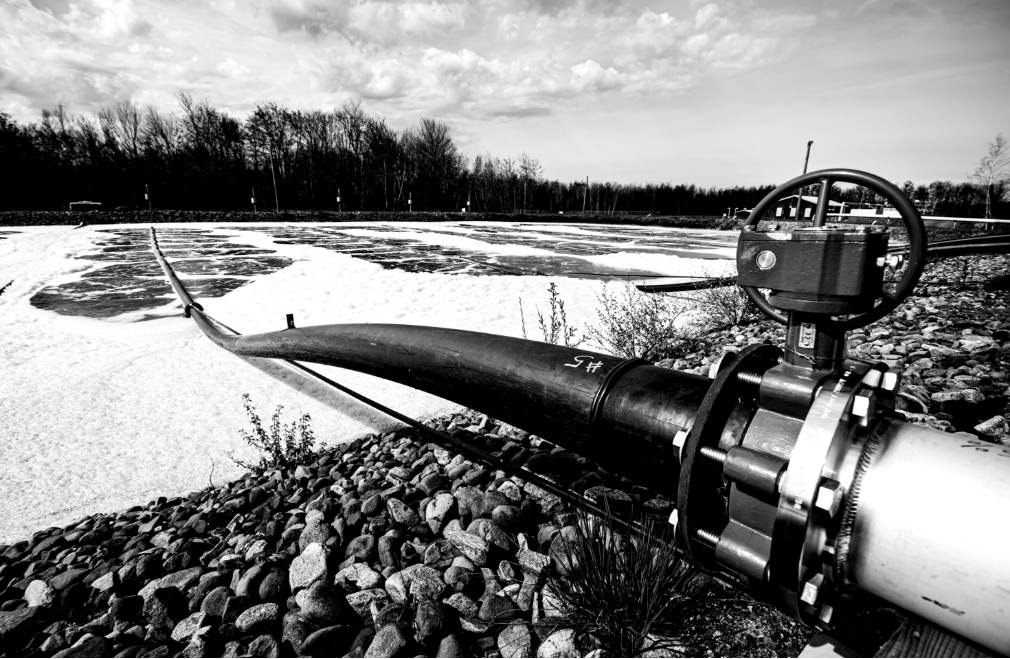It’s easy to look at the landfill and think that it’s simply a big pile of trash, but there’s a lot more to it than that! A landfill is a place to dispose of waste by burying it in a safe and environmentally sound manner. It is composed of many separate cells, each containing a complex system of liners and pipes to keep waste safe and contained. Read on to learn more about the science behind — and beneath — the landfill.

A DEEPER LOOK AT THE LANDFILL
While your efforts to separate your waste help hugely, there is no escaping the fact that some waste will have to be added to the landfill. But even then, we’re doing a lot more than just burying the problem. The landfill is a sophisticated system, designed to isolate and minimize the impact of the waste we all produce. Let’s dig in!

The landfill is made up of several, contained cells.
The bottom of each cell has a series of liners made from natural materials and thick engineered plastic, to keep things safe and contained.
A network of pipes runs along the bottom of the cells.
Liquid from the waste moves through this piping to the wastewater plant for treatment.
Once the cell is ready, we start filling it with waste.
We do this in one small area at a time, called the working face. At the end of each day, the area is covered to help control litter and odours.
Waste is dumped at the working face and compacted.
This helps to ensure each landfill cell lasts as long as possible, while also helping to reduce litter and odours.
Gradually, the cell is filled with waste.
Once the cell is full, wells are drilled to capture gasses created by decomposing waste — mostly methane — so it can be burned to generate energy and while emitting less Greenhouse Gas Emissions.
Finally, the cell is capped.
This involves placing a cover — or “cap” — over the cell to avoid the spread of contaminants. This is achieved using compacted clay and soil, and by planting grass.
Eco360’s work doesn’t end there.
Landfill cells produce liquid and gaseous by-products for many years once they’re closed, so they require long-term treatment and monitoring.
DID YOU KNOW…?
• Eco360’s landfill started in 1992 and is now on its 17th cell.
• Constructing a new landfill cell costs upwards of $1.6 million and our landfill cells typically take about 2 years to fill.

WHAT HAPPENS TO YOUR WASTE ONCE IT’S LANDFILLED?
You’ve sorted your waste, separating your recyclables and organics (great work!) But what happens once your non-recyclable waste has been collected curbside? All the clear garbage bags from across Southeast New Brunswick are brought to the Eco360 landfill, and the waste is added to the landfill cell as described above. Let’s take a closer look at what happens next.

Breaking it down
When the waste starts to break down and decompose, it creates two environmentally harmful substances: a liquid called leachate and a mixture of gas — mainly composed of methane — called landfill gas.
Treating water
The leachate is pumped out to our treatment ponds for a first treatment, and then through to the Greater Moncton Wastewater System.
Transforming gas
The landfill gas is captured in a series of piped wells and directed to our generator to be burned and transformed into CO2, which is 25 times less harmful for the environment than methane.
Creating green energy
The energy created by burning the landfill gas is then sold back into the grid to provide green energy for New Brunswickers.
Helping to power our province
Eco360 produces enough electricity to power an average of 450 New Brunswick homes for a year. This makes us a net energy producer, meaning that we create more energy than we consume!
Help keep our landfills less full!
Now you know what happens to your waste that cannot be recycled or composted. This garbage is not going anywhere, and it keeps on accumulating, so always try to reduce your waste! Think twice before buying things and reuse as much as you can — at home, or through donation. We can all work together to put as little waste as possible in our landfill!



